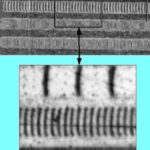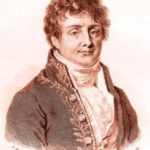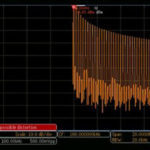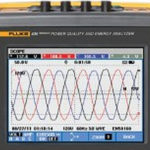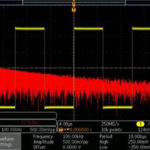We speak of 50- or 75-Ω coaxial cable. The novice wonders if these numbers apply to a given length, say 100 ft. Could you connect an ohmmeter to one end of the cable and expect to get that reading with or without the conductors shunted at the far end? The answer is absolutely not. The characteristic impedance […]
How to look at magnetic domains
A central concept in magnetism is the domain, discovered in 1906 by Pierre-Ernest Weiss. He theorized that in any magnetically permeable material, a large number of mostly microscopic regions existed as separate walled-off entities. In each of these entities, called domains, the atomic moments align in parallel when magnetized. But the alignment of individual domains […]
Basics of Fourier transforms
Joseph Fourier (1768-1830), in his principal work, “On the Propagation of Heat in Solid Bodies” (1807), laid the groundwork for what is now known as the Fourier Transform. In years to follow it was modified by others to make it more generally applicable. Today the basic insight is central to our understanding of a broad […]
The system of menus in the Tektronix MDO3000 Series oscilloscope
New users are invariably challenged by the large number of front-panel controls and extensive menu trees found on modern scopes. Many menu items have single-word designations, which only begin to describe their extensive functions. In on-screen menus, specific display modes are not always where you expect to find them. Learning the layout of this architecture […]
Basic and advanced modes in the Tektronix AFG31000 Series arbitrary function generator
Early signal generators, dependent upon vacuum-tube technology and subject to failure, were ancestors of today’s far more precise and durable arbitrary function generators. These instruments have advanced modes and functions that figure prominently in research and product development as well as troubleshooting and repair. Here the word “arbitrary” means the instrument is capable of generating […]
Differences between stand-alone and scope-based spectrum analyzers
Most oscilloscope manufacturers also offer an extensive line of spectrum analyzers. There are similarities as well as differences between these two distinct instruments. The oscilloscope is optimized to display signals in the time domain, its default mode. Additionally, pressing Math>FFT, the same signal appears in the frequency domain. In the Tektronix MDO (mixed domain oscilloscope), […]
The ups and downs of oscillators in test equipment
Examine the low-frequency signal source in many kinds of test equipment and you are likely to find a harmonic oscillator. A harmonic oscillator typically consists of an amplifier that gets its input from its own output. A part of the output feeds back to input while the rest is an output signal. To support oscillations, […]
Checking power line quality with test instruments
The average homeowner probably doesn’t think about the quality of the electrical power coming out of household wall sockets. But that’s not the case for large industrial facilities where capacitive, inductive, and non-linear electrical loads can be large enough to distort the ac waveform. In those cases, electrical power quality becomes an important measurement. Electric […]
Understanding instrumentation for measuring total harmonic distortion
When discussing total harmonic distortion (THD), the fundamental of the wave in question is known as the first harmonic. Quantifying THD, therefore, begins with the second harmonic. Theoretically, the number of harmonics is limited only by some maximum frequency based on minimum quantum wavelength. In reality, however, we are interested in a relatively small number […]
Morse code, the first serial communication protocol
Today we tend to take for granted the fact that even PC-based oscilloscopes can automatically record and decode packets or frames sent via serial protocols such as 1-Wire, RS-232, and Ethernet. But back in olden times, the decoding of serial protocols was a job for humans. We are speaking, of course, of what was probably […]


